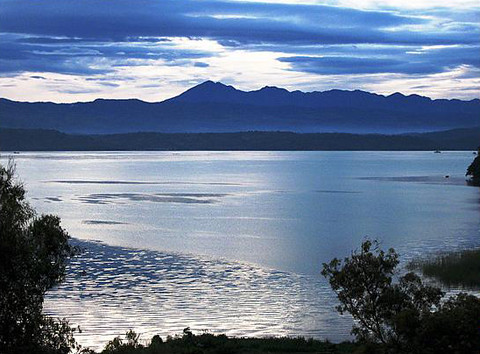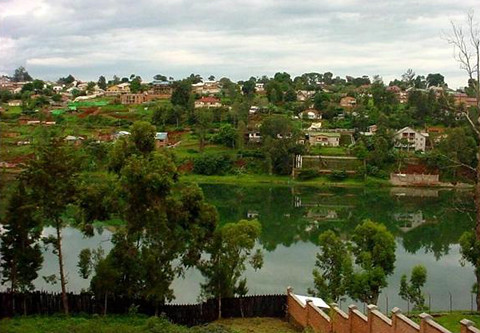(9AM EST – promoted by Nightprowlkitty)

Lake Kivu, between the Democratic Republic of Congo and Rwanda

Bukavu, the capital of South Kivu Province in the Democratic Republic of Congo,
on the south shore of Lake Kivu
The village of Sange is located just north of Bukavu on a crumbling highway (N2) which carries all northbound traffic into the DRC from Tanzania and Burundi.
At least 230 people have been killed and nearly 200 others injured after a fuel tanker truck overturned and burst into flames in a blast. The flames engulfed dozens of residences and several crowded makeshift cinemas in a village (Sange) in eastern Democratic Republic of Congo (DR Congo), officials said Saturday.
The accident took place late Friday in the village of Sange, on the border with Burundi, when the tanker truck from Tanzania burst into fire shortly after it overturned and began to leak oil.
Flames spread to dozens of earthen and straw houses and several flimsy roadside shacks, where scores of villagers were watching World Cup TV coverage. “People tried to escape but were caught by the fire and reduced to ashes,” said Tondo Sahizira, a local teacher.

Bodies in Sange
Sange, Bukavu, and South Kivu Province are located in one focus of the ongoing multi-national war in Central Africa, which has killed about 5,000,000 people in the last twelve years.
In eastern Congo, the prevalence and intensity of rape and other sexual violence is described as the worst in the world. In October 2004 the human rights group Amnesty International reported that 40,000 cases of rape had been reported over the previous six years, the majority occurring in South Kivu.
This is already a nightmare, but it gets unimaginably worse.
In July 2007, United Nations human rights expert Yakin Erturk called the situation in South Kivu the worst she has ever seen in four years as the global body’s special investigator for violence against women. Sexual violence throughout Congo is “rampant,” she said, blaming rebel groups, the armed forces and national police. Her statement included that…
“Frequently women are shot or stabbed in their genital organs, after they are raped. Women, who survived months of enslavement, told me that their tormentors had forced them to eat excrement or the human flesh of murdered relatives.”

4 comments
Skip to comment form
Author
The incomprehensible complication of shifting alliances and tribal loyalties in the hellish zone around Bukavu and Sange is well represented in an analysis of some recent developments in South Kivu from the experts at GlobalSecurity.org.
FARDC is the regular army of the Democratic Republic of Congo.
FDLR was originally a regular army under Rwandan control, but long ago devolved into a stand-alone militia.
Fizi is an especially miserable town in South Kivu, historically disconnected from Kinshasha, essentially lawless, and an appropriate birthplace for the current President of the DRC Joseph Kabila.
I’m speechless.